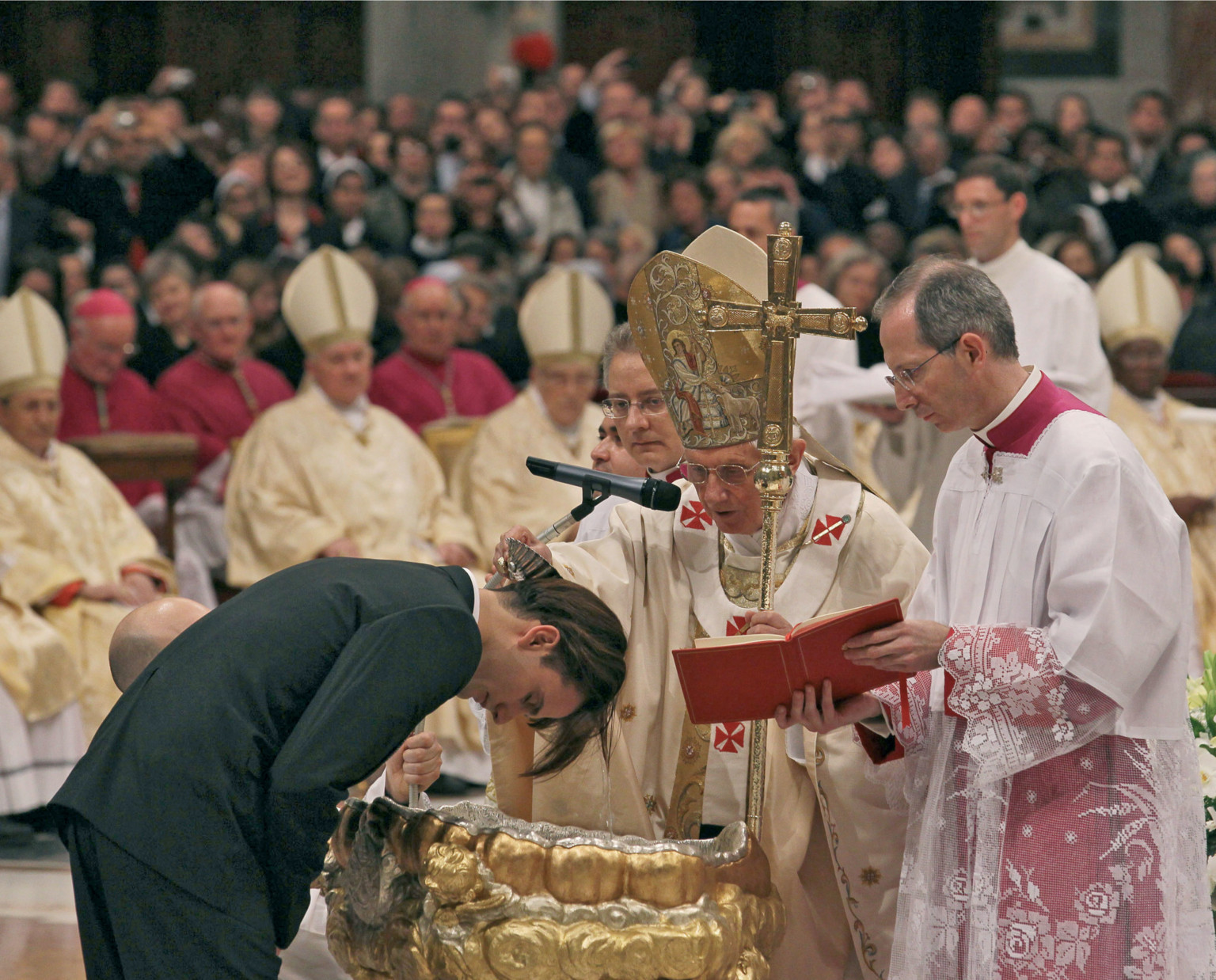ROME – From a media point of view, the overwhelming focus during Holy Week 2023 has been on the health of Pope Francis, since it began on Palm Sunday less than 24 hours after the pontiff had left Rome’s Gemelli Hospital following three nights there to treat a bout of bronchitis.
The stamina Francis has displayed this week, skipping only Friday evening’s Via Crucis celebration due to unseasonably cold weather in Rome and otherwise displaying strong form during lengthy and demanding liturgies, has gone a long way to quiet talk of a fin du régime climate within the Vatican.
The keen attention to the pope’s physical condition, however, means that other storylines have gone largely unnoticed. They include the fact that this is the first Holy Week of Francis’s reign in the absence of his predecessor, Benedict XVI, who died on Dec. 31. Indeed, it’s the first Holy Week in almost a century without the late pontiff, who was born in 1927.
For those with eyes to see, there were nevetheless a few scattered reminders of Benedict XVI throughout the week.
To begin with, every Easter vigil Mass, in a sense, beckons thoughts of the late pontiff, since he was born on Holy Saturday, entering the world at 4:45 a.m. on a bitterly cold Bavarian spring day.
Because it was Holy Saturday, the future pope was baptized immediately with the newly blessed Easter water in the small parish church in the village of Marktl am Inn, a fact the pontiff would later see as symbolic of the human condition and its “not quite” relationship with the full promise of Easter.

By tradition, popes always baptize a handful of new members of the faith during the Easter Vigil Mass, as Pope Francis did this year with eight people from Albania, the United States, Nigeria, Italy and Venezuela.
Given Benedict’s personal history, being baptized at the Easter vigil arguably creates a special bond with the late pontiff.
In another reminder, 88-year-old Italian Cardinal Raniero Cantalamessa, the Preacher of the Papal Household, delivered a homily during the Vatican’s Good Friday Passion service worthy of Pope Benedict XVI himself.
Cantalamessa, who’s held the position of Preacher of the Papal Household since 1980, issued a critique of relativism and the Nietzschean concept of “the death of God,” which he said has become prominent “in our de-Christianized Western world.”
Referring to the Nietzschean concept of “beyond good and evil,” in which Nietzsche holds that morality must be jettisoned if humanity is to reach its full potential, Cantalamessa argued that when any sense of good and evil are eliminated, “the will to power” is the only thing that remains.
That argument was a staple of Benedict’s thought as well. Among other examples, he saw the unbridled will to power, shorn of any moral consideration, behind the rise of National Socialism in his native Germany during the 1930s.
Nietzsche’s thought, Cantalemessa said, has wielded vast influence, to the point of becoming a fashion and an atmosphere that reigns in the intellectual circles of the ‘postmodern’ Western world.” The “common denominator” of it all, he said, “a total relativism in every field – ethics, language, philosophy, art, and, of course, religion.”
Memorably, of course, in the last homily he ever gave prior to his election as pope, then-Cardinal Joseph Ratzinger at the 2005 Mass pro eligendo romano pontifice warned of a “dictatorship of relativism” in modern life which does not recognize anything as definitive and whose ultimate goal consists solely” of satisfying “the desires of one’s own ego.”
For those familiar with Benedict’s thought, therefore, Cantalamessa’s Good Friday homily, delivered in the presence of Pope Francis, seemed almost an homage.
Finally, there was a largely unintentional reminder of Benedict’s liturgical theology in the fact that Pope Francis presided, but did not celebrate, the liturgies of Holy Week.
Liturgy was a special concern of the late pontiff, and one of his pet peeves was what he described as an excessive “creativity” on the part of too many celebrants during the Mass, taking the focus off the sacred mysteries and placing it on themselves.
To bring that point home, Benedict XVI always insisted on placing a crucifix on the altar during celebration of the Mass. In his 2000 book The Spirit of the Liturgy, he was openly scornful of those who complained that doing so obstructed their view of the priest-celebrant.
“Moving the altar cross to the side to give an uninterrupted view of the priest is something I regard as one of the truly absurd phenomena of recent decades,” he wrote. “Is the cross disruptive during Mass? Is the priest more important than Our Lord?”
Though it probably wasn’t quite what Benedict had in mind, the truth is that because of the keen focus on the pope, the celebrants of the Holy Week liturgies certainly were not the stars of the show.
Here’s who actually celebrated the Masses this week:
- Palm Sunday: Cardinal Leonardo Sandri, Vice-Dean of the College of Cardinals
- Holy Thursday Chrism Mass: Cardinal Angelo De Donatis, Vicar of the Diocese of Rome
- Holy Thursday Mass of the Lord’s Supper: Monsignor Diego Ravelli, Master of Papal Liturgical Ceremonies
- Good Friday Passion Service: Cardinal Mauro Gambetti, Arch-Priest of St. Peter’s Basilica
- Easter Vigil Mass: Cardinal Arthur Roche, Prefect of the Dicastery for Divine Worship and the Discipline of the Sacraments
- Easter Sunday Mass: Cardinal Giovanni Battista Re, Dean of the College of Cardinals (scheduled)
Give it a month, and I guarantee you it would take a real Vatican nerd to be able to correctly identify those six clerics and which liturgy they celebrated.
Though this was very much Pope Francis’s Holy Week, one in which the pontiff demonstrated anew the resilience and determination which have always been defining qualities, these traces of his predecessor nevertheless offer a reminder that “the two popes” will be forever linked, in life and even in death.
















